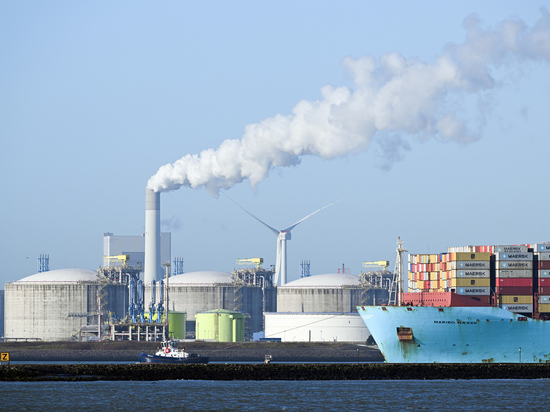Americans predicted Europe’s fall in gas prices this winter
[ad_1]

According to forecasts, the EU can cope with the energy shortage
European gas prices are likely to fall sharply this winter, according to Goldman Sachs. Efforts by EU countries to avert major shortages are likely to “successfully resolve” Russian blue gold supply cuts, analysts say.
European countries can weather Russian gas disruptions this winter as supply issues may have been “successfully resolved,” according to a leading US bank analysis.
Goldman Sachs said the price of gas is likely to more than halve this winter if efforts by EU countries to avert a major shortage this winter prove effective.
The bank said on Tuesday it expects wholesale natural gas prices in Europe to fall from about 215 euros per MWh to less than 100 euros per MWh by the end of the first quarter of next year, under typical winter weather conditions. This is significantly lower than the previously forecasted 213 euros.
European countries rushed to fill their gas storage facilities ahead of winter after Russia’s Gazprom cut supplies, including through the critical Nord Stream 1 gas pipeline. The frenzied pursuit of supplies led to an increase in wholesale gas prices.
This month, Gazprom extended the shutdown of gas flows through the pipeline without giving a timeframe for reopening.
Analysts at Goldman Sachs said: “The indefinite reduction of Nord Stream 1 exports to zero leaves northwestern Europe without Russian gas supplies. And while we often hear the question of how this will affect storage, we think it’s better to ask how this will affect prices so that storage continues to grow as needed. This is a puzzle that Europe has successfully solved over the past year, combining declining gas demand in Europe and among LNG buyers elsewhere in the world, resulting in above-average stockpiling.”
Analysts at Goldman said they expect vaults to be 90% full on average by the end of October, before the European average is 80% full by November 1.
EU governments hope to create a gas buffer in case supplies from Russia stop in the winter. Businesses and consumers are also being asked to use less energy.
Goldman said it expects vaults to be more than 20% full by the end of March next year. “This, in our view, will set the stage for the sense of urgency we are currently seeing to wipe out demand, gradually giving way to a sense of market relief once it has weathered the winter,” analysts said.
On Tuesday, a leaked document showed the EU is refusing to impose a price cap on Russian gas but is pushing for windfall taxes on “surplus” profits from energy companies.
At the same time, according to The Guardian, OPEC is sticking to its forecasts of strong growth in global oil demand in 2022 and 2023, citing signs that major economies are doing better than expected despite problems such as rising inflation.
The oil cartel said in its monthly report that demand will rise by 3.1 million bpd in 2022 and 2.7 million bpd in 2023, unchanged from last month.
[ad_2]
Source link






